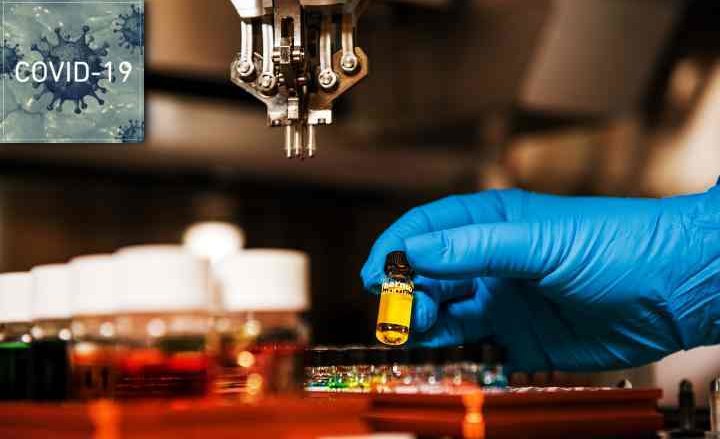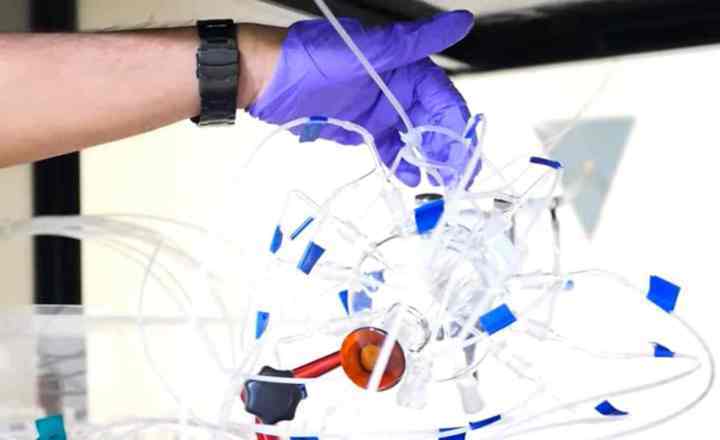With improved strategies to fight, prevent, and treat COVID-19 being the need of the hour, many Indian institutes and universities have redirected their research activities towards meeting this challenge. Suchibrata provides a glimpse into how various researchers at one such institute, the Indian Institute of Science Education and Research (IISER) Pune, are contributing to this effort through innovative research solutions.

As the world is shaken by the recent COVID-19 pandemic, all eyes are focussed on the research community and the progress made in countering the novel coronavirus. Scientists are tirelessly working to find a vaccine and a drug to treat this disease that has drastically changed the lifestyle of people around the globe. Scientists at the Indian Institute of Science Education and Research (IISER) Pune are amongst those putting in a sincere effort to contribute in this area.
Diagnostics
Nixon Abraham, Assistant Professor in the Department of Biology, is working in collaboration with B.J. Government Medical College, Pune, to detect certain asymptomatic COVID-19 cases where lack/reduction of the sense of smell (known as anosmia/hyposmia) is the only indication of having the disease. His research team has developed an olfactory action meter — an instrument which could be used to detect this symptom. With the help of this instrument, healthy people can be easily distinguished from COVID patients who are suffering from lack/reduction of sensing ability.

Chaitanya Athale, Associate Professor in the Department of Biology, is developing an inexpensive and portable method for easy detection of viral RNA from COVID patients, using a paper-based diagnostic approach. His team is designing a special class of RNA (known as toehold RNA switches), which act as a sensor to detect the viral RNA sequence. When these switches interact with trigger RNA from the virus, they help produce a protein that is either a chromophore (coloured) or fluorescent (capable of emitting light upon stimulation) and this can be detected using a smartphone. In the future, the team is planning to build a library of toehold switches RNA to detect most of the strains of this virus, even if it mutates over time.

To facilitate the standard polymerase chain reaction (PCR)-based COVID-19 testing process, S.G. Srivatsan, Professor in the Department of Chemistry, along with one of his senior students, is working on the synthesis of WHO-recommended fluorescently labelled DNA probes. With initial results showing promising outcomes, Srivatsan is confident that his lab can prepare probes for forty thousand or more tests, which will significantly reduce the country’s dependence on foreign suppliers.
Therapeutics
Sanjeev Galande, Professor in the Department of Biology, and his group aim to improve the state-of-the-art animal facility and generate model systems using genetically modified animals to facilitate animal research into the biology of the novel coronavirus. For this, they are using advanced genome editing technology to manipulate embryos and thereby generate gene-edited models. The future goal of studying these animal model systems lies in improving the understanding of viral pathogenesis and subsequent therapeutics.
Arnab Mukherjee, Associate Professor in the Department of Chemistry, and his students are working on a computational model to design drug molecules. Usage of such drug molecules would block the receptor to which the coronavirus attaches on human cells, and thereby eliminate the possibility of COVID-19 infection. Based on the computational outcome, the team has screened existing drugs available in the market that have structural similarity with the computationally designed drugs. These screened drugs could be suitable for therapeutic use against COVID-19.
Healthcare Support
Atikur Rahaman, Assistant Professor in the Department of Physics, and co-workers are working on the development of a superior Personal Protective Equipment (PPE) kit coated with a superhydrophobic layer to minimize the attachment of big droplets caused by sneezing or coughing by a COVID patient. The layer is based on hydrophobic nanoparticles, which also show effective germicidal properties. The hydrophobic property hinders the adherence of the incoming droplets on the surface of the PPE kit by reducing their contact area. On the other hand, germicidal properties eliminate the risk of contamination from any remaining attached traces.
Another significant effort is being made by Sunil Nair and Umakant Rapol, Associate Professors from the Department of Physics with the help of Nilesh Dumbre (Technical Officer), and their former students in building a ventilator to support severe COVID cases. The first version of the ventilator was developed based on the principles of Mechanical Ventilator Milano from Milan and an open-source ventilator from the University of Florida. The researchers are using locally available components to fabricate this hybrid version. However, the second version is a full-fledged low-cost ICU ventilator which can be an important substitute and is based completely upon indigenous technology developed at IISER Pune. Some of the striking features of these ventilators are remote monitoring and subsequent control of various health parameters of COVID patients.
Researchers all over the world are working hard to mitigate the suffering caused by the pandemic, with researchers at IISER Pune also doing their part in contributing towards fighting this battle. Such efforts and collaborations are the need of the hour in taking the country forward in such unprecedented times.